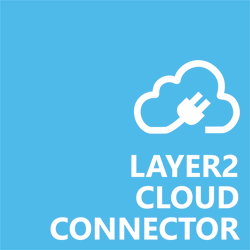No credit card required. Register, download and try as long as you want
Migration FAq of the Layer2 Cloud Connector
The Layer2 Cloud Connector can integrate data and sync documents between 100+ typically used IT systems and apps without programming. Find answers to frequently asked questions specifically about using the connector for data and file migration to the cloud.
Explore frequently asked questions by topics.
The migration, synchronization, or backup of pre-selected files on local department’s network file shares or user’s home drives is often one of the first steps when companies or organizations are moving to the Microsoft Cloud. However, Microsoft’s free out-of-the-box tool, the OneDrive for Business sync client, is known to have issues and limitations regarding file selection, file name conventions, file types allowed, number of documents supported for sync, and platform availability. The Layer2 Cloud Connector can help to close these gaps with flexible, SQL-style pre-selection queries of local document sets for synchronization.
With the Layer2 Cloud Connector, you can make use of your documents and files stored on a local file server or NAS in the Microsoft Cloud, such as Office 365, OneDrive for Business, Office Groups, or Microsoft Teams. But what to do when the number of files you want to use are amounting to 50K or more?
Learn here about the differences, limitations and benefits of the Layer2 SharePoint provider and the new Layer2 Office 365 Fast File Sync.
The Layer2 Cloud Connector runs a Windows Service to migrate, sync or backup documents between local file server and SharePoint on-prem and online, OneDrive for Business or Office 365 Groups. It fixes many common sync issues automatically. Additional tools can be used to be better prepared for the first sync.
You can keep documents at your local file server or NAS in sync with SharePoint libraries, such as used in Microsoft Office 365, SharePoint Online or on-premises, OneDrive for Business, Microsoft Teams, Office Groups, and others one-way or two-way without any programming.
The Layer2 Cloud Connector can assign managed metadata automatically to documents during SharePoint Online migration from file servers using Dynamic Columns in C#.
Integrating your local file server with SharePoint Online could highly increase the benefit of any Office 365 subscription. Below typical questions are answered regarding such a hybrid environment.
Ready for next steps?

